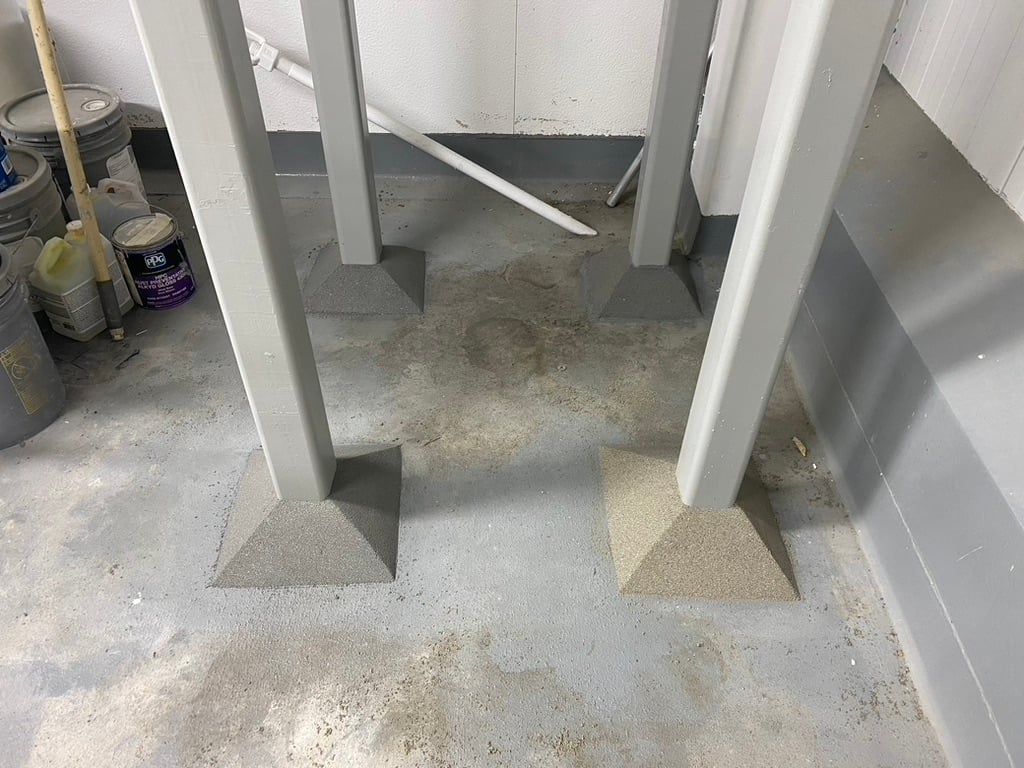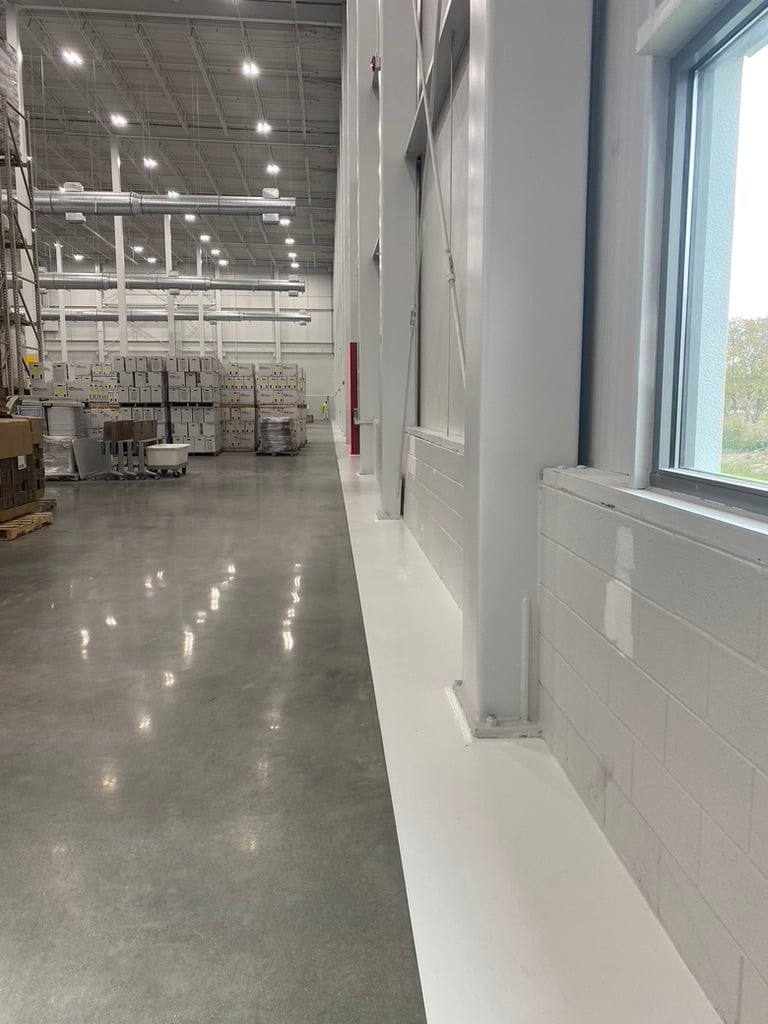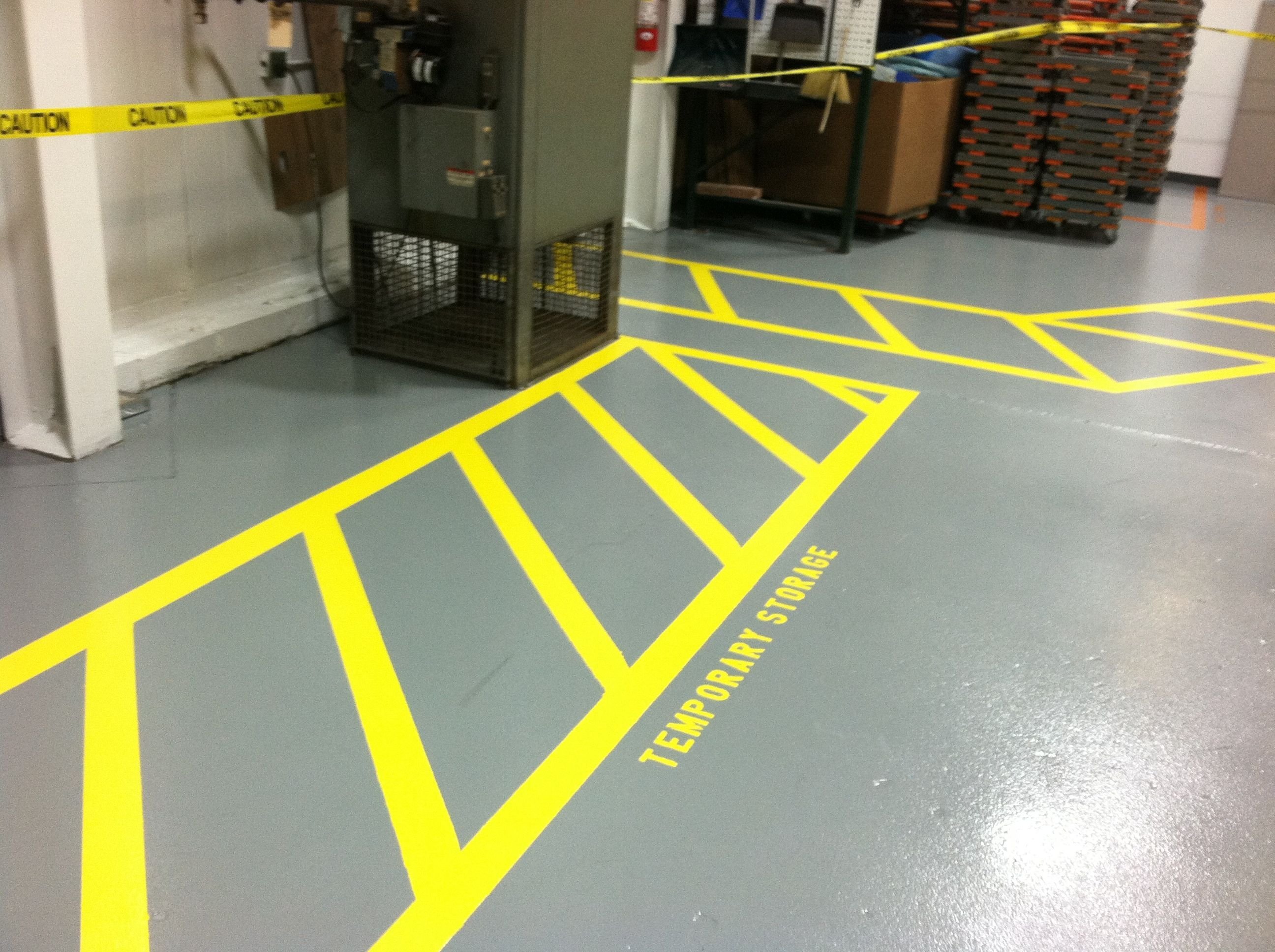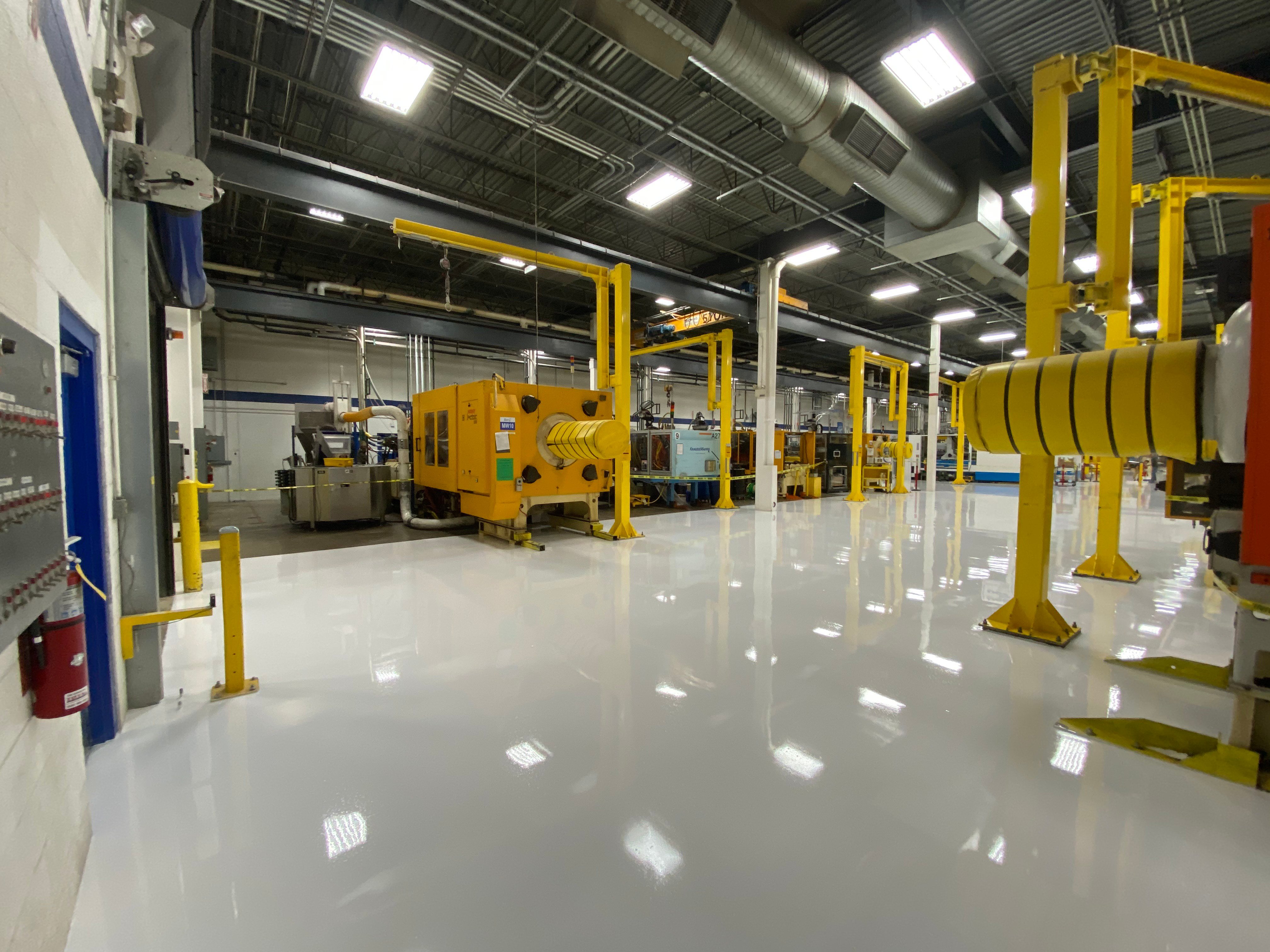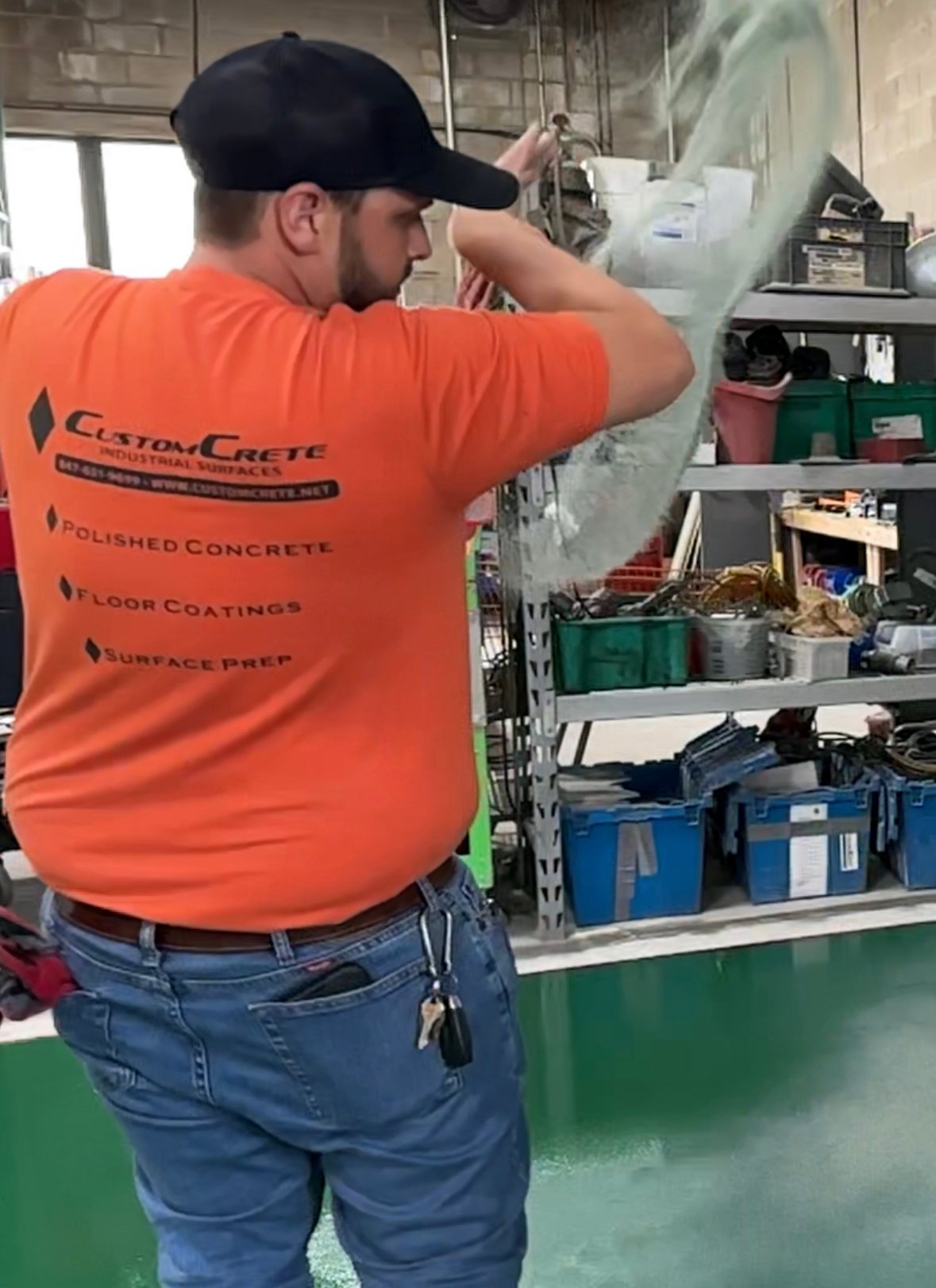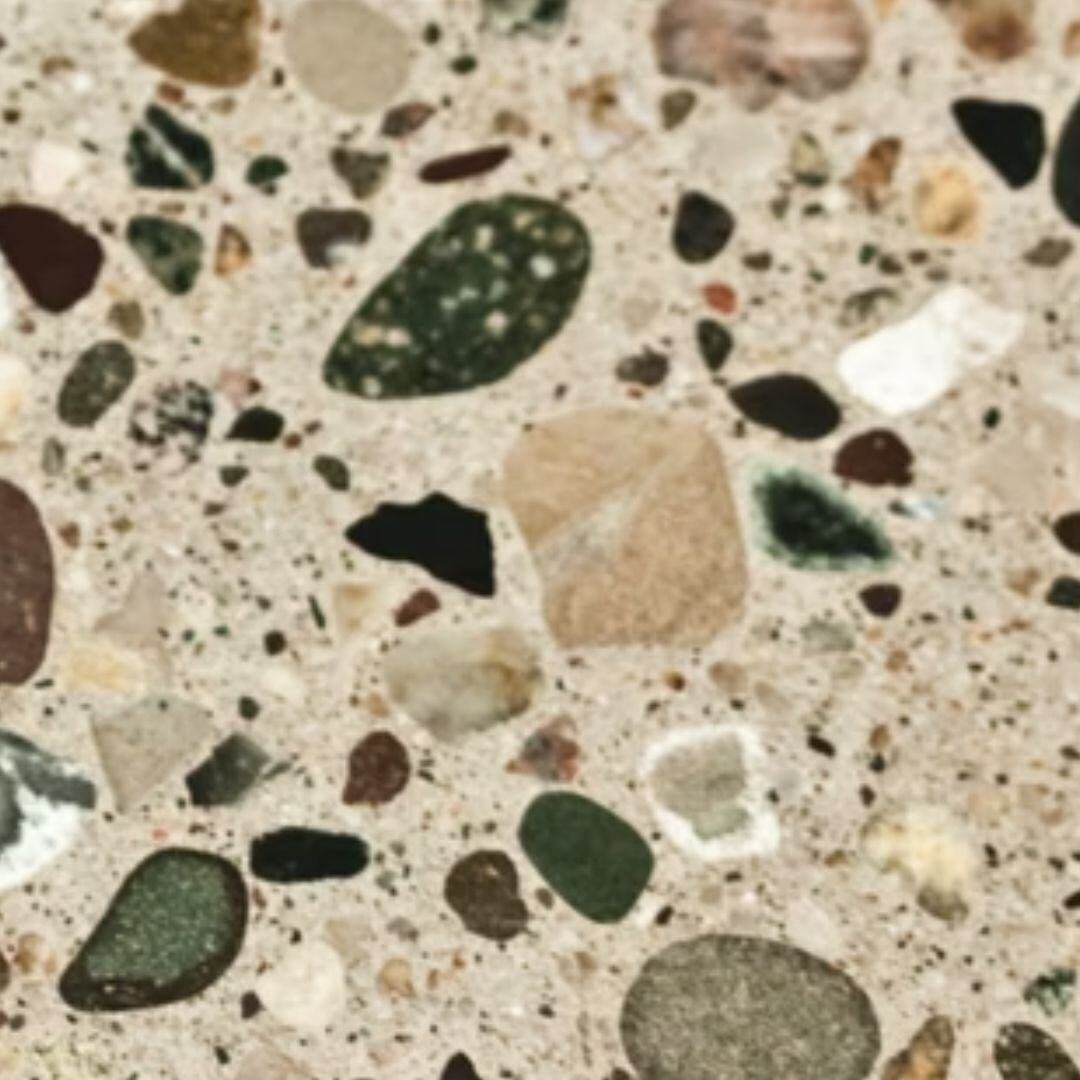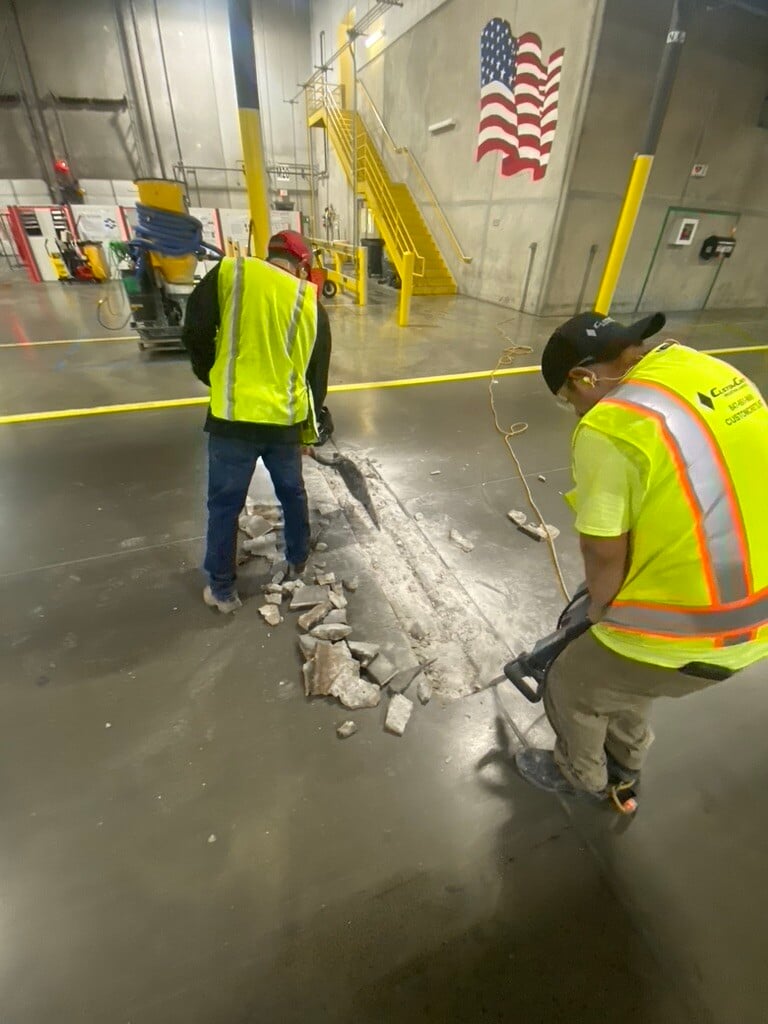Before and After Case: Grind and Seal Project Using a Waterborne Acrylic Sealer
June 27th, 2025
3 min read
By Tom Dassie
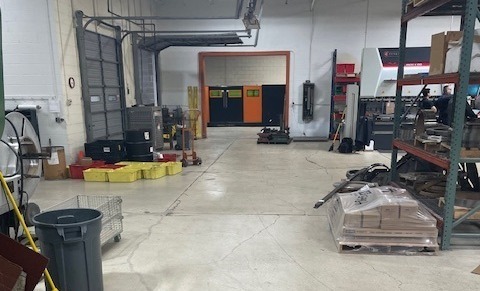
Not all flooring projects begin with disaster—some start with a desire for improvement. At Dovee, the existing concrete wasn’t damaged, but the space felt dusty, dated, and hard to keep clean. They needed a solution that could brighten the environment without triggering a full renovation or introducing unnecessary downtime.
CustomCrete has installed hundreds of grind and seal systems across Chicagoland, and we know when minimalism delivers maximum results. By focusing on thoughtful prep and breathable, water-based sealers, we help clients achieve clarity, cleanliness, and durability—without overcomplicating the process.
In this case study, you’ll see how a clear acrylic grind and seal turned a dull, utilitarian floor into a clean, refreshed, and functional surface—all with minimal disruption and lasting value.
When Simple Is Smart: The Challenge Behind the Project
Not every flooring project calls for heavy-duty coatings or complex installation systems. Sometimes, the most effective solution is also the simplest.
That was the case for one of our recent clients—a facility in need of a clean, refreshed look without the aggressive texture or thickness of epoxy or urethane coatings. The floor wasn’t heavily damaged, but it had lost its visual appeal and had become dusty, dull, and harder to maintain.
The client wanted a solution that was:
- Visually cleaner and brighter
- Easy to maintain
- Fast to install
- Low in odor and disruption
That’s where a grind and seal with acrylic came into play. This straightforward method offered just the right balance of performance, appearance, and speed—delivering real value without over-engineering the outcome.
Our Process: Grind and Seal with Acrylic
At CustomCrete, we’ve completed hundreds of sealed concrete projects across commercial and light industrial spaces. Our focus is always on thoughtful preparation and choosing the right sealer for the job—not just applying product and walking away.
Here’s what this particular project involved:
Surface Preparation
We began by mechanically preparing the concrete surface using diamond grinders equipped with industrial HEPA-filtered dust collection systems. This ensures that:
- The sealer properly adheres to the concrete
- Any surface contaminants, residues, or old finishes are fully removed
- Indoor air quality is protected during grinding
Proper prep is crucial for any sealer system—skipping this step often leads to peeling, uneven absorption, or poor long-term performance.
Sealer Application
Once the surface was clean and profiled, we applied two coats of a clear, waterborne acrylic sealer. This type of sealer is known for:
- Low odor and fast dry time
- Enhanced appearance by deepening the natural tones of concrete
- Dustproofing to reduce maintenance needs
- Light chemical and abrasion resistance suitable for non-abrasive environments
The result is a smooth, breathable finish that subtly enhances the concrete’s natural beauty while adding a layer of functional protection.
The Results: Durable, Dust-Free, and Visually Upgraded
The final floor now reflects a clean, clear finish that complements the space without drawing too much attention to itself. While minimalistic, the impact was immediate and appreciated:
- Dust-resistant: Helps reduce airborne particles and daily floor debris
- Easy to clean: Maintenance is now as simple as mopping or light scrubbing
- Low-glare aesthetic: Offers a clean, professional feel without being overly reflective
- Fast turnaround: The space was back in action shortly after the second coat cured
This type of solution is ideal for light industrial, utility rooms, storage areas, hallways, or back-of-house commercial zones—anywhere that needs a visual refresh without heavy-duty flooring infrastructure.
Why Choose a Grind and Seal Over Other Flooring Systems?
Grind and seal projects like this offer several distinct advantages when compared to more intensive coating systems like epoxy or urethane:
While grind and seal may not be suitable for high-impact or chemical-heavy environments, it shines in spaces that need an economical, efficient, and attractive solution.
Is a Sealed Concrete Floor Right for Your Facility?
If you're looking for a light-duty solution that enhances the look and function of your space without the need for a full resurfacing or build-up system, sealed concrete is worth considering. Especially when paired with professional prep, a waterborne acrylic sealer can offer just the right balance of performance and polish.
We often recommend grind and seal for:
- Light industrial floors
- Commercial back rooms or storage
- Office hallways or lobbies
- Showrooms or galleries
- Maintenance areas or mechanical rooms
Each job starts with evaluating the condition of your existing slab, your durability needs, and your desired appearance. From there, we help you match the right product and process to your goals.
Final Thoughts
This project is a great example of how less can be more—when done right. A grind and seal with acrylic doesn’t just bring back the original character of your floor; it protects that character for the long haul, making cleaning easier and improving the look of your space with minimal effort.
If your concrete floor is starting to show signs of wear, or if you're simply ready for a more polished look, a sealed concrete finish might be exactly what you need. Request a quote from CustomCrete to see if grind and seal is right for your facility.
Topics:


